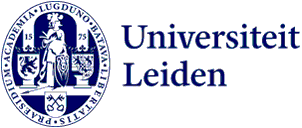Research project
A multi-isotopic investigation of late medieval Koudekerke
The aim of this project is to gain a better understanding of daily life, diet, mobility and health in late medieval Zeeland, as well as to test the potential of multi-isotopic analyses on a Dutch assemblage.
- Duration
- 2024 - 2025
- Contact
- Letty ten Harkel
- Funding
- The municipality of Veere
- Partners
For this project, (post-)medieval skeletal remains from the coastal village of Koudekerke (Zeeland, the Netherlands) are studied, combining radiocarbon dating with a multi-isotopic and a palaeopathological approach. For nine individuals from Koudekerke, diet and mobility are investigated using isotope analysis (carbon, nitrogen, sulphur, strontium and oxygen), while general health is assessed via a palaeopathological study. This will shed light on who these individuals were, where they were from and what their daily lives may have looked like.
Isotopic Insights
A combination of five different elements for isotope analysis (carbon, nitrogen, strontium, oxygen and sulphur) has not been attempted before in the Netherlands. This project serves as a pilot study to test out this multi-sample, multi-isotopic methodology for the reconstruction of diet and mobility of a Dutch assemblage.
For this project, the skeletal remains of nine individuals from (post-)medieval Koudekerke are studied. Access to these remains has been granted by the Walcherse Archeologische Dienst (WAD).
Apart from its scientific merit, this project also aims to draw more attention to the province of Zeeland within the field of Dutch archaeology.
Preliminary Results
The project is still ongoing, but so far radiocarbon dating has shown that at least some of the studied individuals date to the thirteenth and fourteenth centuries, which is quite close to the foundation of the parish of Koudekerke in the eleventh/twelfth centuries.
The group was buried at a cemetery surrounding the Michaëlskerk (Michael's Church), the first iteration of which was made of wood. Because the later stone version of the church dates to the fourteenth/fifteenth centuries, the earliest of these individuals were likely interred next to the first (wooden) version of the church.
Other Projects
This project serves as a pilot to the project 'Living in an emporium: An isotopic investigation of diet and mobility in early medieval Dorestad (Netherlands)'.
